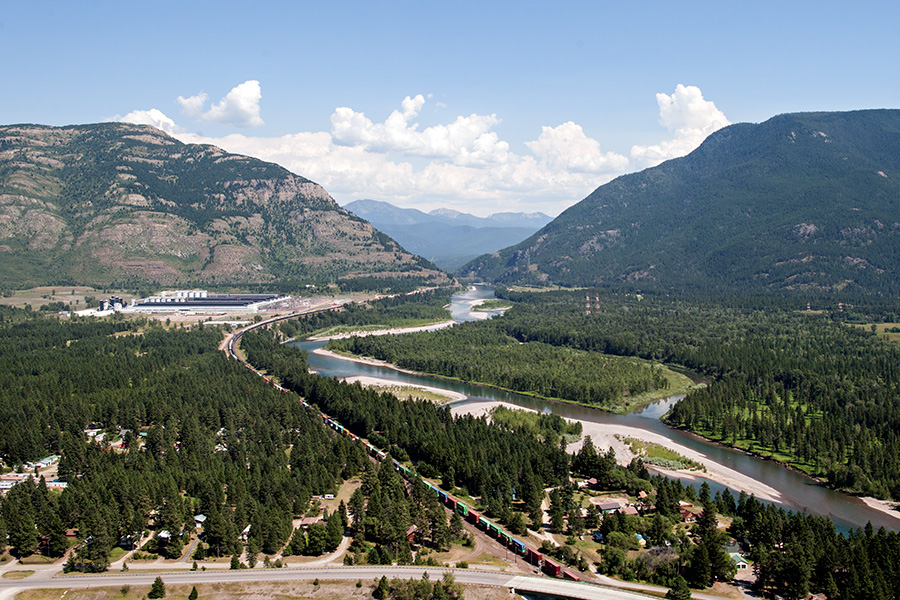A new report by local conservation groups details how the Trump administration’s proposed budget cuts to the U.S. Environmental Protection Agency could cost the state more than $3 million in federal grant funding and hobble ongoing efforts to clean up and protect Montana’s waterways.
In calling for several billion dollars in cuts to the EPA, the president’s proposed budget could hamper scientific research, slow efforts to prevent pollution in local rivers, hold fewer polluters accountable, and stall work to clean up contaminated sites on the National Priorities List, or Superfund, according to the report, “Rough Waters Ahead,” written by the nonprofit Montana Research and Policy Center with support from Montana Trout Unlimited.
The Trump administration’s proposed fiscal year 2018 budget released in May cuts funding for the EPA by 31 percent, from $8.2 billion in fiscal year 2017 to $5.7 billion next year.
According to David Brooks, executive director of Montana Trout Unlimited and a Superfund historian who contributed research to the report, the dramatic cuts would have significant consequences in the Treasure State, particularly to its 17 active Superfund sites, which could stand to lose $1,049,297 in funding next year. The sites received $3,497,656 in fiscal year 2017.
Of the grant funding Montana stands to lose, about one-third of the money would be a reduction to Superfund-related cleanup grants, Brooks said, which could spell trouble for sites like the shuttered Columbia Falls Aluminum Company plant near the Flathead River. The EPA listed the CFAC site on the National Priorities List last fall, designating the 960-acre property for Superfund investigation and eventual cleanup.
Early rounds of sampling confirm the existence of cyanide, fluoride and hazardous metals to varying degrees at the property, and the investigation confirms that groundwater has been impacted by materials placed in legacy landfills that were used from 1955 until approximately 1980.
“With 30 percent proposed cuts to the EPA, cleanup work at many or all of those sites could slow down or be put on pause indefinitely,” Brooks said
U.S. Sen. Steve Daines, R-Montana, said the Trump administration should be looking at efficiencies to reduce federal spending.
But in a letter to EPA Administrator Scott Pruitt, Daines urged the agency to prioritize Superfund over other programs so as to not slow the pace of cleanup.
“Montana is home to nearly 20 National Priorities List Superfund sites, including the Columbia Falls Aluminum Company Plant, Libby Asbestos and Silver Bow Creek/Butte Area sites, the last of which includes the infamous Berkeley Pit,” Daines wrote. “According to a study prepared by the EPA, when cleanup is delayed for ten, fifteen, and even up to twenty years, the discounted present value of benefits of cleanup are mostly lost because sites are stigmatized and the homes in the surrounding communities are shunned.”
U.S. Sen. Jon Tester, D-Montana, blasted the proposed cuts, telling Pruitt in June during a Senate Interior Appropriations Subcommittee, on which he and Daines both sit, that the budget fails Montana communities that depend on the funding to mitigate corporate pollution.
“You told me that you are going to punish bad actors. It is your job to hold these bad actors accountable and make sure they come to the table with a wallet that has money in it, and the EPA must oversee the cleanup,” Tester said at the time.
The cuts could also impact ongoing efforts to clean up iconic rivers like the Bitterroot, the Clark Fork and the Swan, where timber harvests in the 1980s affected bull trout habitat due to runoff from logging roads, eroding stream banks and producing high levels of sediment deposition.
In the 1990s and early 2000s, the Montana Department of Environmental Quality relied on EPA funding to develop limits on sediment pollution in Goat and Piper creeks, which are tributaries of the Swan. EPA funding also granted $409,000 to Swan Valley Connections, a community-based nonprofit that has conducted years of restoration work in the Swan River watershed.
“As a result, sediment pollution in Goat and Piper Creeks decreased by almost a third and three-quarters, respectively, meeting targets for better water clarity, and therefore better habitat for bull trout,” the report states.
Today, Goat and Piper creeks are no longer impaired.
In 2011, the state and federal government acquired the Plum Creek Timber Company’s holdings in the Swan Valley, marking one of the most significant land-conservation projects in state history, decreasing the intensity of logging activities in the valley and preventing the lands from being developed in piecemeal fashion, which would result in the loss of critical connections between core wildlife ranges.
Still, Brooks said the work is far from complete, and that existing sources of pollution continue to imperil water quality and human health, requiring continued vigilance and action.
“Now is not the time to hobble the essential work of protecting and restoring Montana’s waterways,” the report concludes. “To build on the progress of recent decades and ensure that our waterways are safe for swimming, fishing and other uses, funding for the EPA and the state and local efforts it supports should be increased, not cut.”
